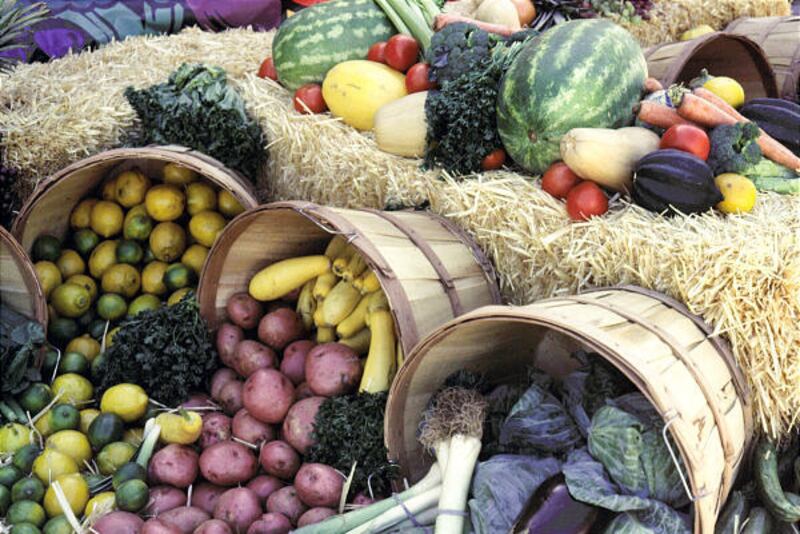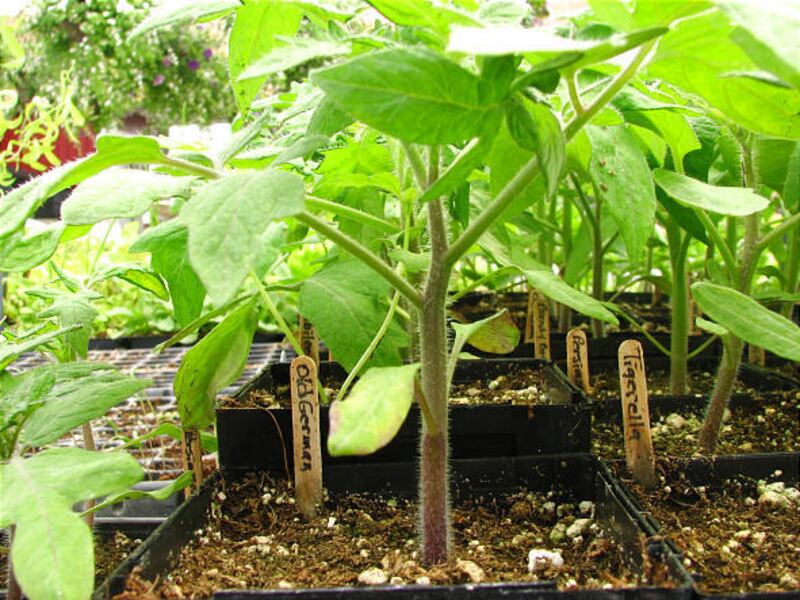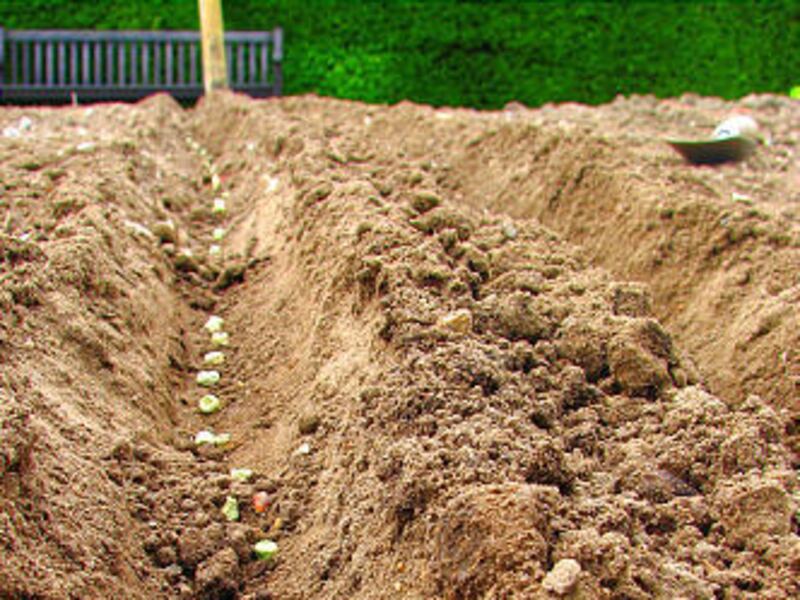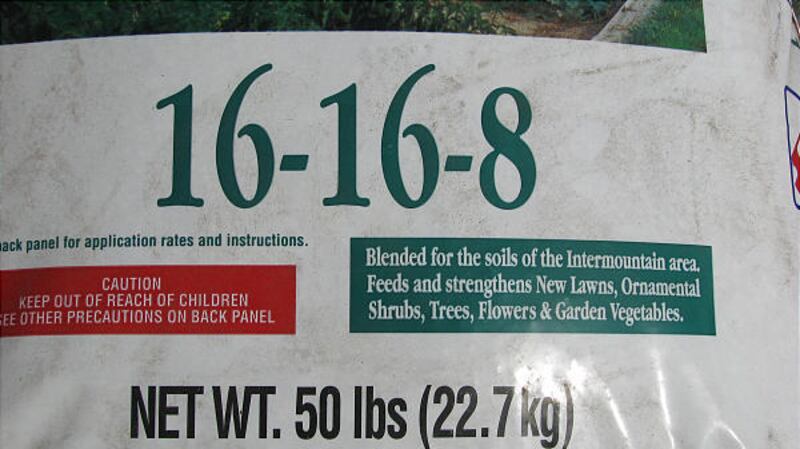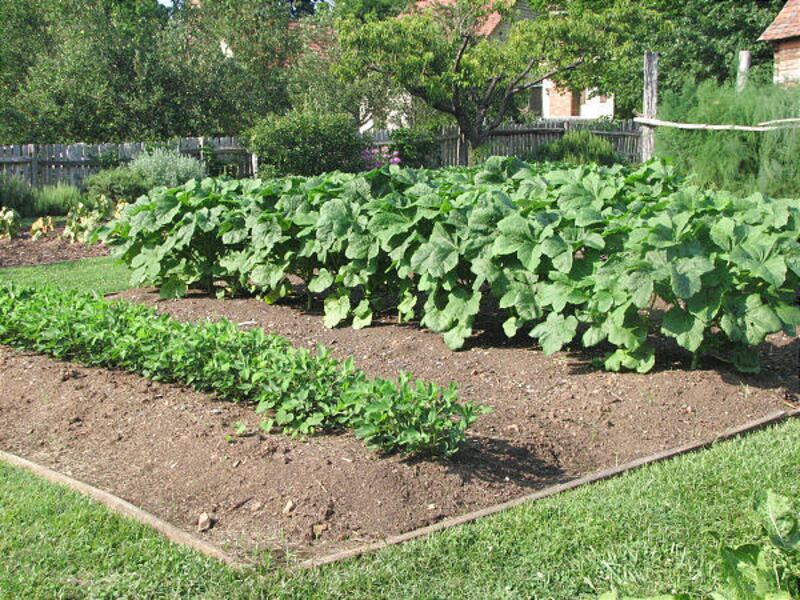How do I learn how to garden?
I hear this question more frequently as I answer questions, teach classes and visit people.
The popularity of growing your own food has re-emerged for many reasons.
For some, it is economic, as they want to stretch their hard-earned dollars. Others want to have the freshest and tastiest vegetables possible.
Still others want to grow food using fewer pesticides and synthetic fertilizers. Others are following religious counsel to learn to be more self-sufficient and store their excess produce for use in times of need.
Many of the health problems facing this nation could be reduced by eating more fresh fruits and vegetables from your garden. Helping others learn to grow their own food gets them outside and active.
You should never forget the health benefits of working in the garden — enjoying the physical exercise from working outside and also the mental relaxation from working the soil, seeing plants grow and enjoying some of God's gifts to mankind.
Gardening is a great family activity. For me, learning to garden was a gift from my parents. My father farmed and taught me many things, but my mother's time and temperament were more suited to the tender vegetable seedlings in our garden.
She patiently taught me how to plant, nurture, water and fertilize the plants. She taught me to hoe to the end of the row to remove the weeds.
She also taught me how to harvest and then preserve the fruits of my labors which we enjoyed eating throughout the year.
Today, many people, particularly the younger generation, did not have a mother who taught them about gardening. This column is for them.
What do my vegetables need to grow?
Growing plants is a mystery to some. Good gardeners learn to separate fact from fiction and quickly learn that gardening is both art and science. They spend time with their plants, learning to determine their needs and growing conditions. For them, gardening offers tasty rewards.
Plants have several basic needs. They need light, the proper growing temperatures, nutrients and water. Plants make their own food, hormones and vitamins. As a gardener, your task is to provide for the needs of your plants to help them grow well.
Light is critical to carry on growth through photosynthesis. Most vegetables need at least six hours of direct sunlight each day. If your growing area does not provide this light, move the garden or grow leafy vegetables, such as lettuce, that do not produce a fruit.
Vegetables are divided into two groups — cool-season and warm-season types. Cool-season plants will tolerate a light frost; warm-season types will not take freezing temperatures. Always plant the seeds or transplants according to what they will tolerate.
Although plants make their own food, they must have the right nutrients. Understanding what nutrients a plant needs and how best to apply them is essential to growing a good garden.
Water is critical for all plants, especially in our high mountain deserts. Water is a critical component to make plant food and also provides the needed internal support, cooling, and movement of nutrients throughout the plants.
Introduction to soils
Soil is the basis of all good gardening. Gardeners who are blessed with good soil can skip this step. For the rest of us, start digging. Never learn to live with a problem soil! Work each year to improve it.
If you are unsure about your soil or if it has never been gardened, start with a soil test. It costs $14 to get a basic soil test from the Utah State University analytical lab. You can access the lab information at www.usual.usu.edu.
This test tells your soil type based on the amount of sand, silt and clay. It also measures the amount of phosphorus and potassium and tests test the soil pH, (alkalinity and acidity) and the salt level.
All soils in Utah are alkaline, and most have either too much sand or too much clay. Regardless of your soil type, you need to add organic matter or other amendments to improve aeration on clay soils and improve water- and nutrient-holding capacity in sandy soils.
Organic matter is material that was once living. It includes compost, mulches, leaves, grass clippings, kitchen waste, manures and many other materials. Plan to add 2 inches of composted material each season to make or maintain a good growing mix.
You can make your own compost or add leaves in the fall. You can also buy myriad commercial products in bags or bulk. The materials need to be abundant, affordable and free of weed seeds and other pests.
Inorganic amendments include perlite, vermiculite, Utelite and other products. These products improve the drainage and aeration of garden mixes.
If you have soils for growing or the soil in your garden area is so bad it won't grow anything, consider using grow boxes, raised beds or container gardens. You can produce vegetables on garden balconies, patios or anywhere that gets enough sun.
Many gardeners think that adding amendments also takes care of the fertilizer needs. Amendments improve the physical properties of the soil but usually do not supply enough of the nutrients that your plants need.
Add fertilizers to supply these nutrients.
How do I plant?
Prepare your soil by adding organic matter and fertilizer as needed. Never work soil that is too wet. Determine when it is time to till or turn the soil by picking up a handful and squeezing it into a ball. Toss it gently into the air. If it falls apart, your soil is dry enough to till.
After tilling or spading your soil, prepare the seedbed by raking it smooth. Plant the seeds according to their planting times based on cool- or warm-season crops.
Plant the seeds at the right depth. Most seeds are planted two to three times the diameter of the seed. For smaller seeds such as carrots or onions, press them lightly into the soil.
If you have heavy clay soil that crusts, cover small seeds with a light sprinkling of peat moss, compost or potting soil that will remain loose enough for seeds to emerge.
Water the seeds carefully to avoid washing them out. Seeds need moist soil to germinate.
If you prefer transplants, buy dark green, stocky plants. Plant them at the same depth as they were in the containers and protect them from temperature and light extremes and from wind.
Water transplants carefully to avoid damaging the tender stems.
What about adding fertilizers?
High-quality vegetables must grow quickly without stress. They need adequate nutrients and water at all times. Fertilizers are elements that plants need to produce their food.
Plants require 16 nutrients. Three of these — carbon, hydrogen and oxygen — make up the bulk of the plant weight and these come from the air and water. Therefore, if the plant has adequate water, you do not have to buy and add these separately.
The other nutrients are supplied by the soil. Fortunately, Utah soils have many nutrients, so gardeners usually only have to supplement nitrogen, phosphorous, potassium and occasionally iron.
Garden soils supply the others in sufficient amounts. Soil tests, mentioned previously, are the only accurate way to determine soil fertility.
By law, any fertilizer product must list the ingredients in the package. When you buy a bag, it will have three numbers on the container. They are the amounts of nitrogen, phosphorous and potassium in that order.
Nitrogen is almost always lacking in our garden soils, but never add too much — particularly to tomatoes, as you will get huge vines and no fruit. Nitrogen deficiency shows as light yellow-colored leaves at the bottom of the plant.
Phosphorous is often unavailable when planting in cold wet soils, so add that as needed. Utah soils and water usually contain enough potassium for most vegetables.
Iron chlorosis affects all plants grown in alkaline soils. The symptoms show as yellow leaves with dark green veins. Reduce the watering and treat the soil with iron chelate if needed.
Understanding garden economics
The measure of a good vegetable garden is what you harvest and eat. Start by selecting your favorite crops. Next, determine if your temperatures, soils, light and water conditions support these choices.
After selecting the kind of vegetables you like, quantify the amount of growing space needed. Unless you have unlimited space, concentrate on those that produce the most food with the least space.
Part of this is basic economics; part of it is based on quality and preference. For example, a corn plant usually takes 2 square feet of soil and produces one ear per plant. That means if you grow 12 stalks of corn, you get a dozen ears of corn on 24 square feet of soil. Last year, ears of corn sold at local farmers markets for $4 a dozen.
A staked or caged tomato, by contrast, takes twice as much room, but over the summer, each plant might produce 5 pounds to 15 pounds of fruit that sells for $1 to $2 per pound. If you had six plants on 24 square feet, you could harvest $40 to $100 worth of fruit over several months.
Multiply that, and you get more economic return from that crop than from many other crops.
Peppers are another high-value crop that produces throughout the season. Some colored peppers sell for $1 or more each, and one plant might have even more fruits than tomatoes.
Garden quality is another important factor. Unless you are getting produce from local sources, you may never get the same quality vegetables that you can grow in your garden. Since you do not have to ship or store the produce, it can be harvested at the peak of garden flavor and texture.
Choosing the right seed
Gardening is a perfect example of reaping what you sow.
You can't harvest good vegetables if you don't plant good vegetables. While all vegetable seeds on the market are good somewhere, they do not all grow well in our high desert, high mountain or other local environments.
Always plant what you want to eat. Growing produce you do not like makes no sense. Quantify how much of each vegetable you need for your family. Believe me, there is no way you can get your family to eat your bumper crop of radishes three meals per day.
It pays to do your research before you plant. It takes no more water, no more fertilizer, no more weeding, no more pest control and above all no more labor and time to grow a good productive cultivar than one that may not produce well in our area. The word cultivar is a contracted word that is short for cultivated variety or one that has been introduced by humans.
We need cultivars that will withstand cool springs but are equally adapted to the hot summer conditions. Depending on the year, frost-free growing seasons average some 150 to 180 days along the Wasatch Front. However, for much of that time, it is too cool to grow warm-season crops.
Where can you find good cultivars' seeds? Start by talking to local gardeners, neighbors and master gardeners. Check local greenhouses and nurseries for their favorites, and ask at farmers markets to get their favorites.
For a downloadable planting chart listing cultivars and planting dates that gives recommendations of how much to plant of each vegetable, go to my Web site at www.larrysagers.com.
When should I plant my vegetables?
Vegetables are divided into four categories based on temperature.
Cool-season vegetables are divided into hardy types and semi-hardy types. These vegetables will tolerate some frost.
Plant the hardy kinds as soon as the soil dries out in the spring. The general calendar dates are March 15 to May 1. This group includes asparagus, rhubarb, broccoli, cabbage, kohlrabi, onions, peas, radishes, spinach and turnips.
These are followed by the semi-hardy types: Plant these a week or two after the hardy types and continue planting until mid-May. Beets, carrots, cauliflower, lettuce, potatoes and chard are in this group.
Two groups are not frost-tolerant — the tender and the very tender. The tender vegetables will not germinate in cooler soils. Plant them on the average date of the last spring frost — about when the first apples bloom in your neighborhood.
Planting times for these is around the first part of May. Add beans, celery, corn, cucumbers, spinach and summer squash to your garden at this time.
The very tender vegetables need very warm soils temperatures to get the seeds to germinate. Plant these about two weeks after the tender vegetables, from May 20 to June 10.
Most of the very tender types originate in tropical areas. They include cantaloupes, watermelons, winter squash, tomatoes, eggplants and peppers.
Continue to plant shorter-season, warm-season crops throughout the summer. Add a second planting of cooler season crops from July 1 until mid-August. These will mature as it cools down at the end of the season and provide some very tasty fall produce.
Where can I get more gardening information?
Utah State University's Extension Service has a wealth of information on growing more than 50 vegetable crops in Utah. These fact sheets, written by an extension specialist, Dan Drost, cover everything from artichokes to watermelons. Each publication includes common pest problems and frequently asked questions. Go to extension.usu.edu/htm/publications to access these and other horticultural information.
Contact your local USU Extension County Office through that same link. They teach many gardening classes, answer questions and offer diagnostic services for pest and environmental problems.
USU also has a great site to solve pest problems. Check that at utahpests.usu.edu/ and find a publication about almost any insect or disease that might trouble your garden in Utah.
Wasatch Community Gardens at wasatchgardens.org offers many classes and workshops throughout the year to help gardeners learn to produce their own food. They also facilitate community gardens and a great plant sale in May.
Red Butte Garden also has a plant sale with vegetables in May and offers some vegetable gardening classes. Check www.redbuttegarden.org.
Larry A. Sagers is a horticulture specialist for the Utah State University Extension Service at Thanksgiving Point. The KSL Radio Greenhouse Show with Larry Sagers airs each Saturday from 8 a.m.-11 a.m. Call 801-575-8255 with your gardening questions.


